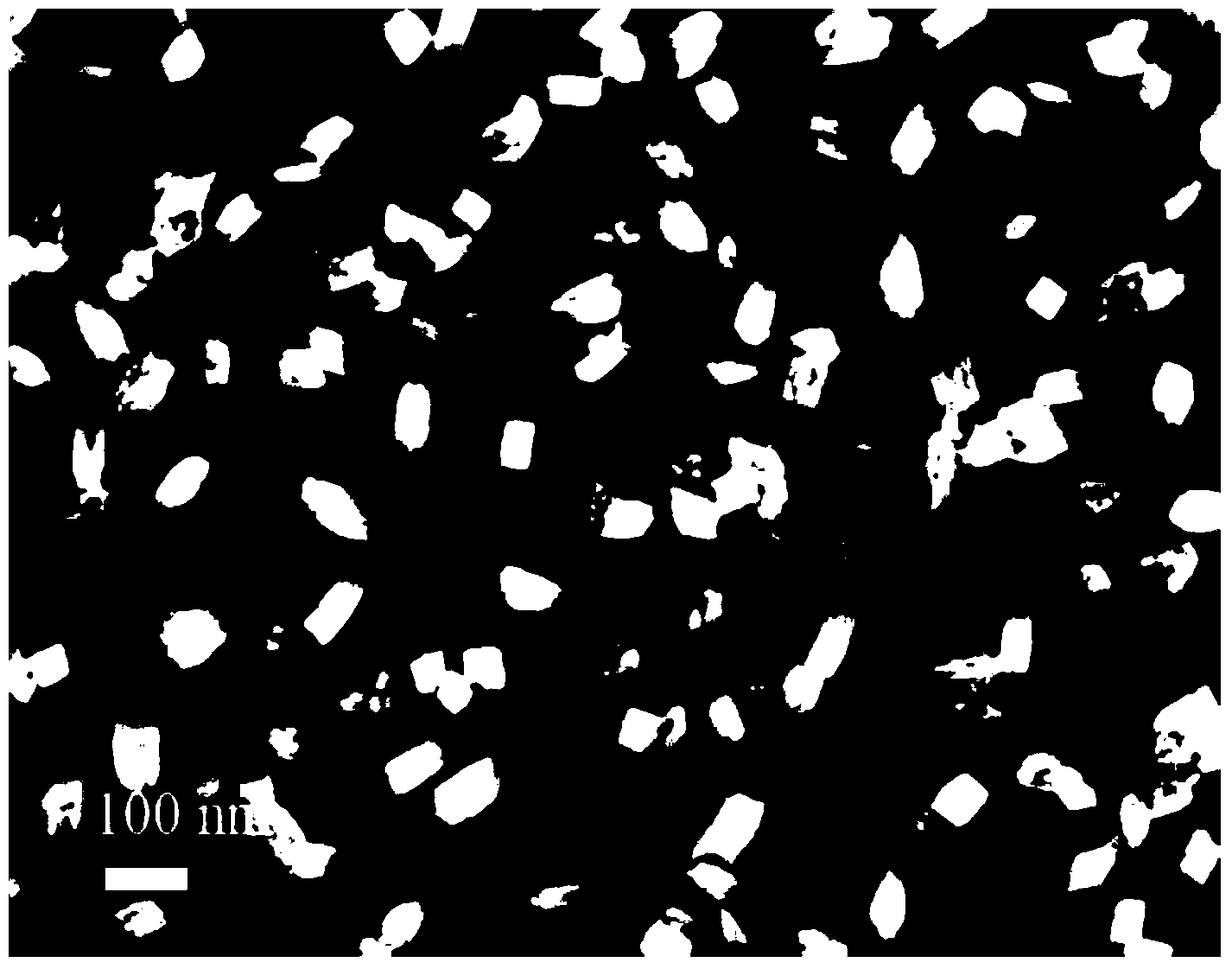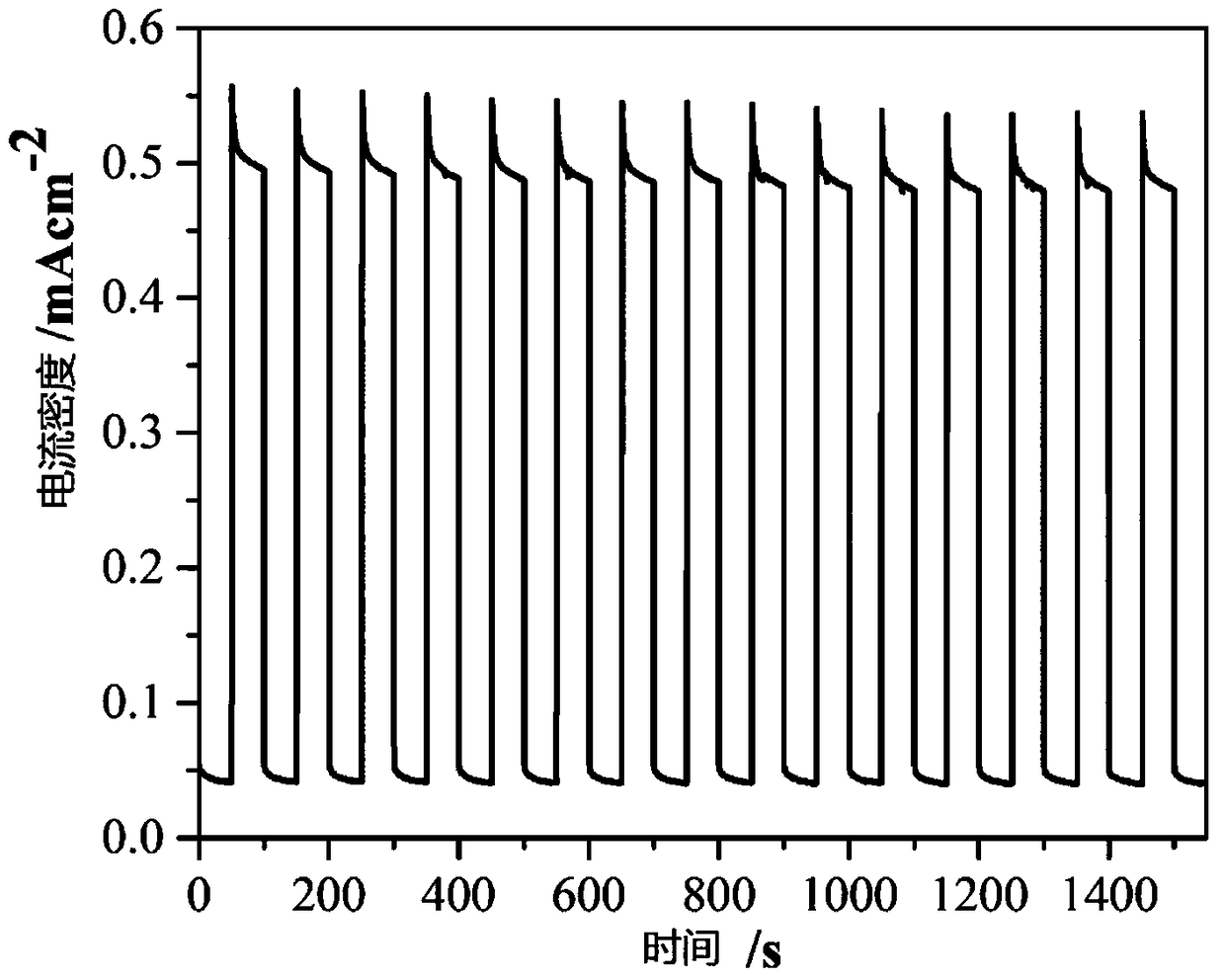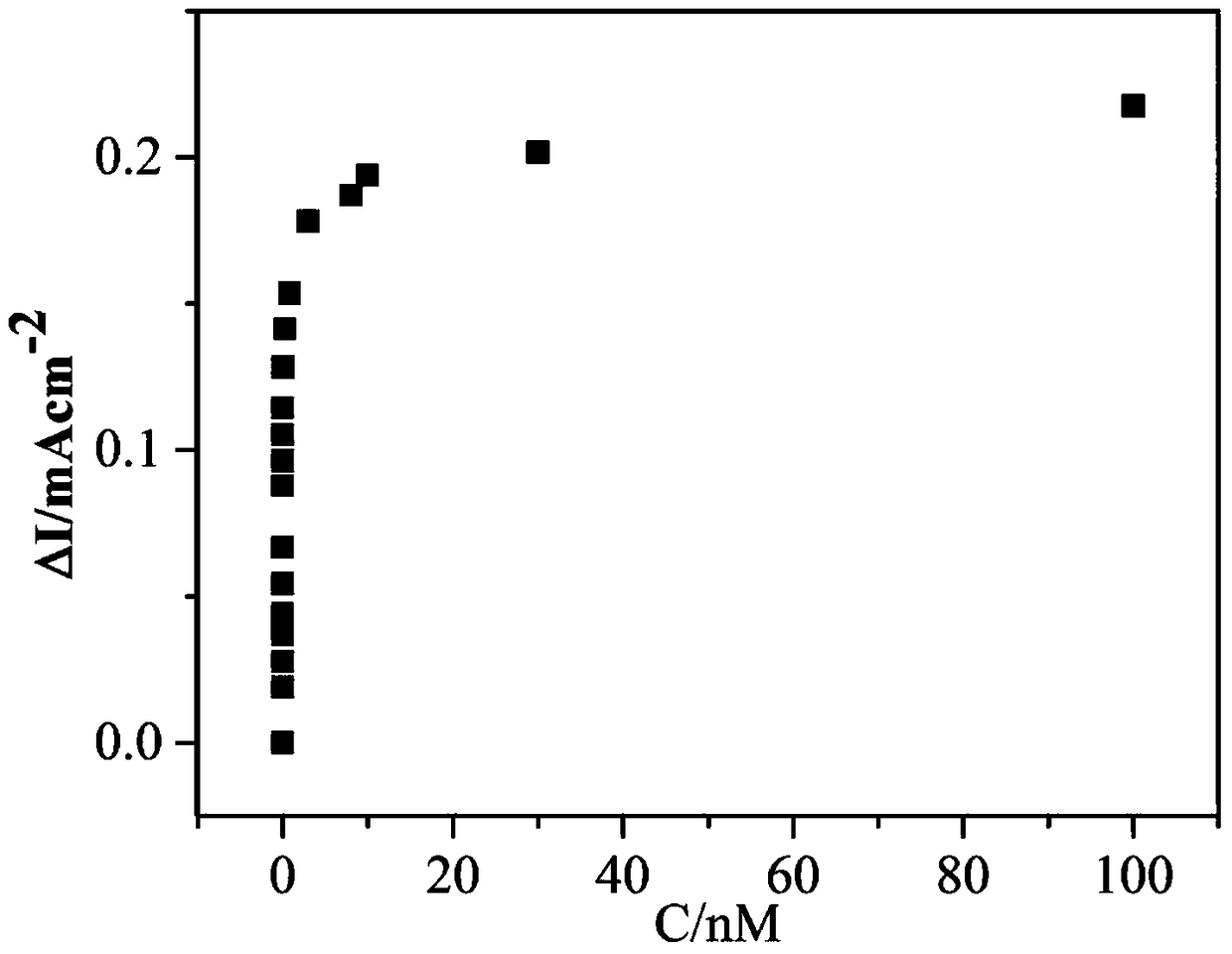A method for the photoelectrochemical analysis of polychlorinated biphenyls based on single crystal tio2 nanorods
A polychlorinated biphenyl and nanorod technology, which is applied in the direction of electrochemical variables of materials, can solve the problem of no selectivity, etc., and achieve the effects of simple and easy method, stable electrode and high sensitivity
- Summary
- Abstract
- Description
- Claims
- Application Information
AI Technical Summary
Problems solved by technology
Method used
Image
Examples
Embodiment 1
[0039] A single-crystal TiO 2 Nanorod-based photoelectrochemical analysis of polychlorinated biphenyls with a working electrode (SC, MI)-TiO 2 The NRs photoanode was obtained by the following steps:
[0040] Growth of a layer of TiO on FTO substrate by sol-gel method 2 Seed. Then, 7.5 mL of deionized water and 7.5 mL of concentrated hydrochloric acid (38 wt%) were mixed and stirred, and then 0.35 mL of tetrabutyl titanate was added dropwise. At the same time, PCB101 was added as a template molecule at a concentration of 3 μM. Stir vigorously for 30 min until the mixture is clarified. Put the pretreated FTO into a 25mL polytetrafluoroethylene-lined autoclave, pour the above solution, seal and react at 150°C for 4h. The obtained electrode was washed several times with distilled water, dried at 60°C, and then calcined at 500°C for 0.5h in a muffle furnace to obtain (SC,MI)-TiO 2 NRs photoanodes, such as figure 1 As shown, (SC,MI)-TiO 2 The NRs photoanode is a square nanor...
Embodiment 2
[0042] Using continuous measurement in the containing 1 × 10 -10 mol / L 0.1mol / L Na in PCB101 2 SO 4 Photocurrent method in solution for (SC,MI)-TiO 2 The stability of NRs photoanodes was investigated. Under light conditions, (SC, MI)-TiO 2 The NRs photoanode can rapidly exhibit a photocurrent response and maintain a stable photocurrent under continuous 50s illumination. At the same time, in the process of continuously investigating the photocurrent response by using the method of applying and not applying the light source at intervals, it is found that in 15 consecutive scans, the photocurrent response value basically does not change, as shown in figure 2 shown. The results show that the constructed PCB101 photoelectrochemical sensor has high stability.
Embodiment 3
[0044] A single-crystal TiO 2 Nanorod polychlorinated biphenyl photoelectrochemical analysis method, using I-t curve method, 0.6V potential and ultraviolet lamp irradiation, in 0.1M Na 2 SO 4 solution, measure the photocurrent of the background solution, and then sequentially use a micro sample injector to Na 2 SO 4 A series of concentrations of 1×10 were added to the solution -4 mol / L~1×10 -10 mol / L PCB101 standard solution, and measure its photocurrent respectively. During the experiment, it was found that with the increase of PCB101 concentration, (SC,MI)-TiO 2 The photocurrent response detected by the NRs photoanode increases gradually, as image 3 shown.
[0045] Figure 4 Among them, the linear fitting equation ΔI / I detected by PCB101 blank =0.862+0.059logC, correlation coefficient R 2 = 0.99787, the detection range is 1.0×10 -14 ~1.0×10 -7 mol / L, the detection limit is 1.0×10 -14 mol / L.
PUM
| Property | Measurement | Unit |
|---|---|---|
| Sensitivity | aaaaa | aaaaa |
Abstract
Description
Claims
Application Information
 Login to View More
Login to View More - R&D
- Intellectual Property
- Life Sciences
- Materials
- Tech Scout
- Unparalleled Data Quality
- Higher Quality Content
- 60% Fewer Hallucinations
Browse by: Latest US Patents, China's latest patents, Technical Efficacy Thesaurus, Application Domain, Technology Topic, Popular Technical Reports.
© 2025 PatSnap. All rights reserved.Legal|Privacy policy|Modern Slavery Act Transparency Statement|Sitemap|About US| Contact US: help@patsnap.com



